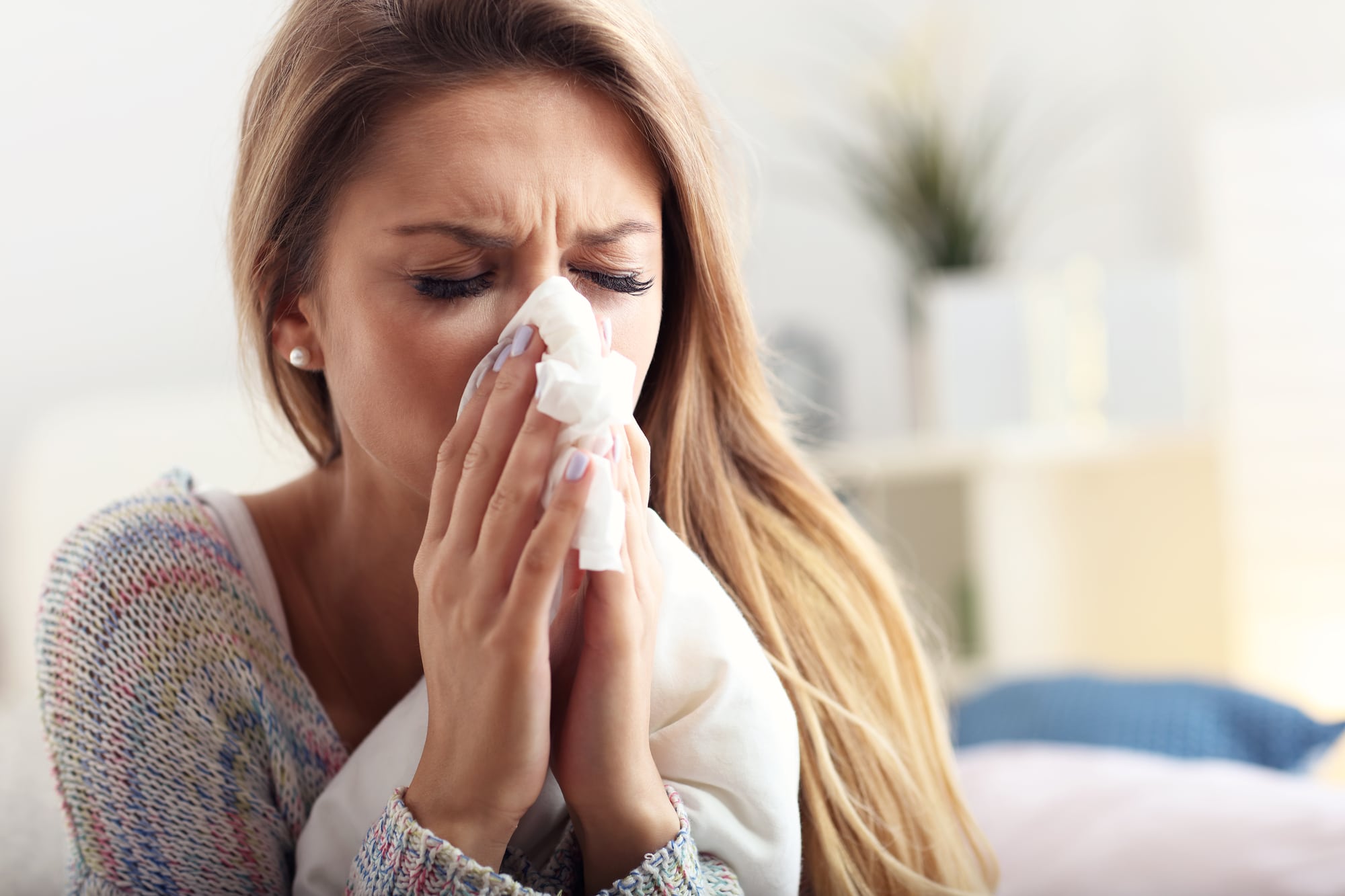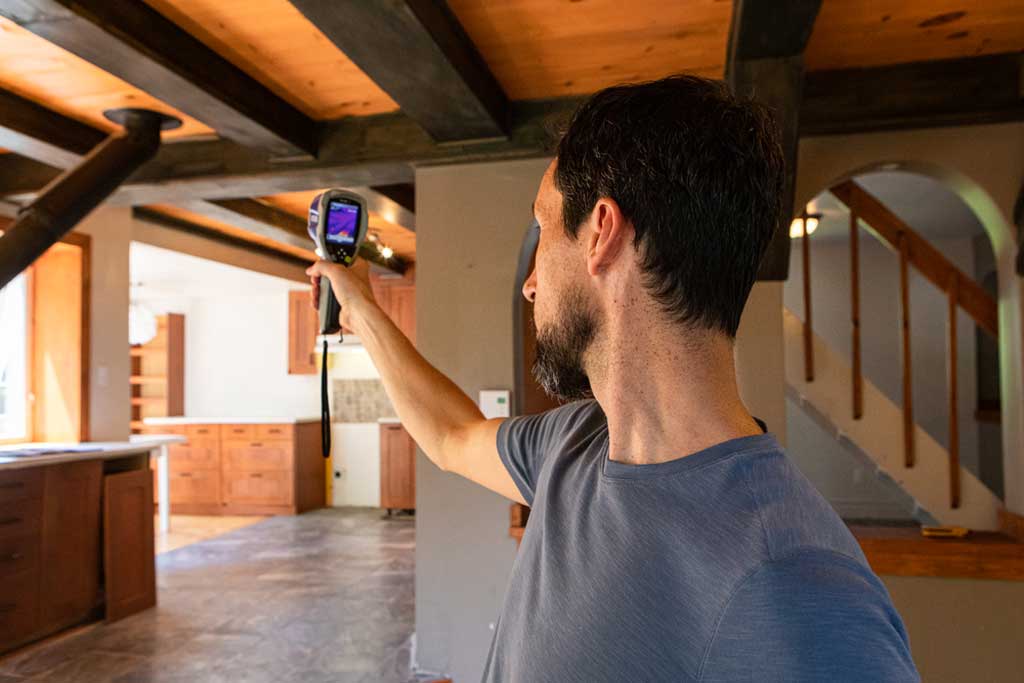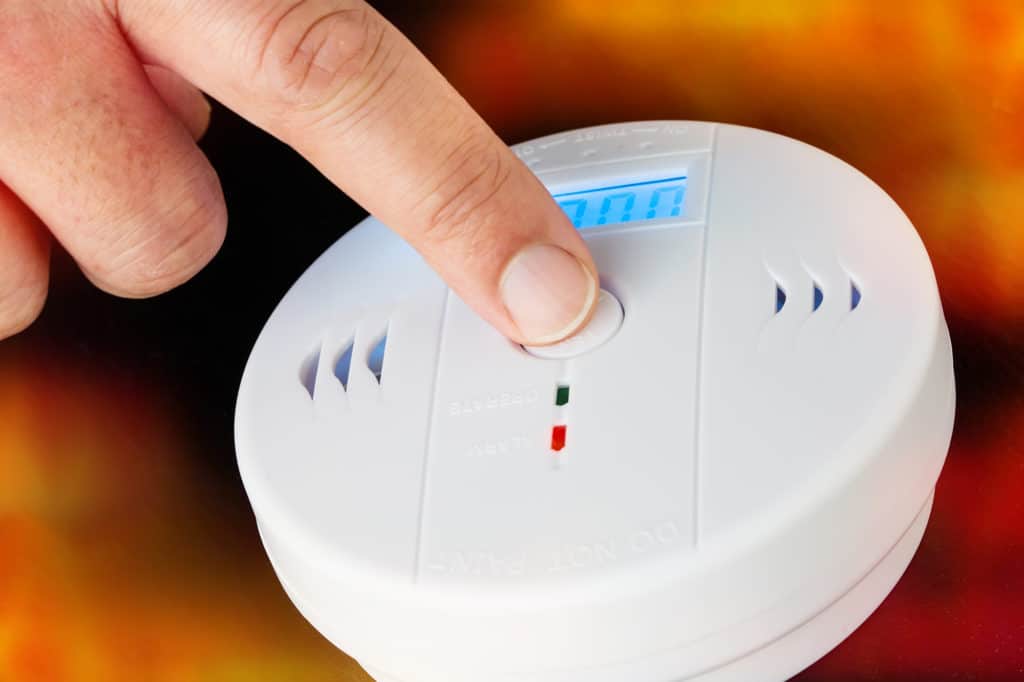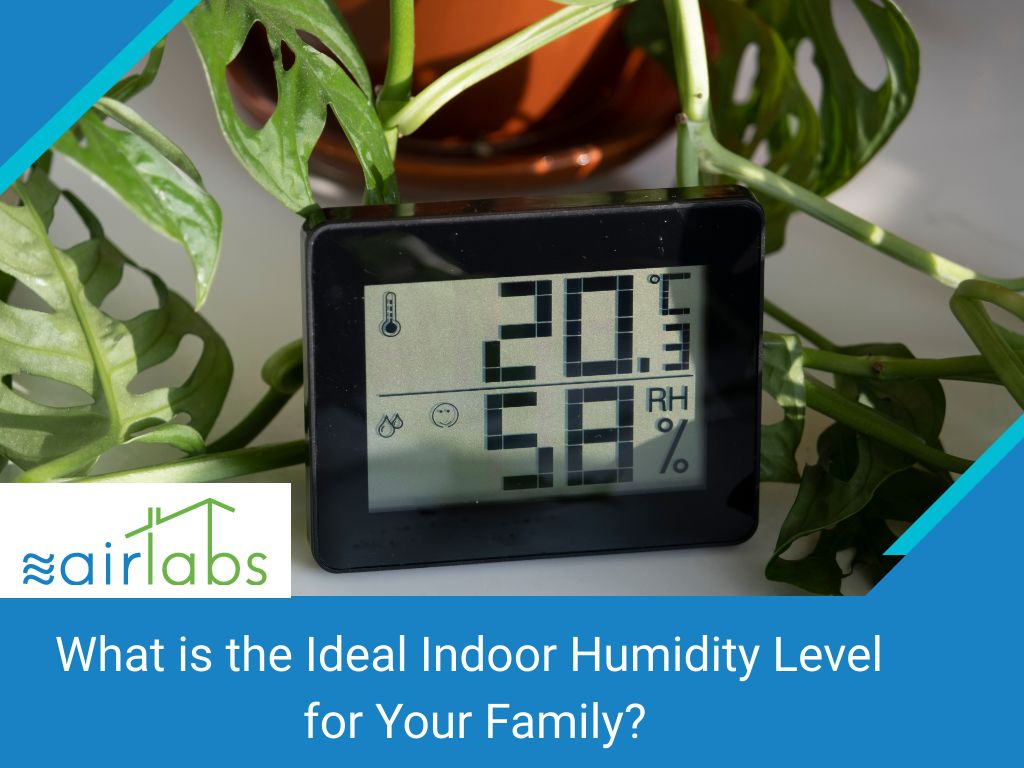What Are the Symptoms of Poor Air Quality in a Home?

You should feel safe in your home. It’s a place where you should literally be able to breathe easily and relax. But, unfortunately, that’s not the case for many Canadians – whether they realize it or not.
Indoor air pollutants are on the rise as building construction and the use of synthetic materials and cleaners increase. What’s even more troublesome is that recent research indicates our indoor air quality is actually more polluted than the air we breathe outside.
Considering that most Canadians spend an estimated 90 percent of their time indoors, we should all be concerned by the prospect of breathing polluted air while we relax, work, dine, and sleep in our homes. We want to spend the majority of our time in a place that’s truly healthy and safe.
Big-city residents aren’t the only people who need to think about their homes’ air quality levels. Even homes in rural parts of the country deal with compromised air quality from weather-related conditions, pollen, and airborne chemicals.
The question is, how do you know if your Canadian home has poor air quality? First, let’s talk about some telltale signs that indicate your family isn’t breathing clean, comfortable air.
Physical Symptoms
The first and often most noticeable symptoms of subpar air quality manifest within the human body. Some of these health problems appear quickly, but others can take years to develop, making them difficult to attribute to air pollution.
As we learn more about the impact of common air pollutants in our lives, we realize just how many physical ailments and illnesses may be correlated (or caused by) poor air quality.
For instance, poor indoor air quality (IAQ) can contribute to:
1. Prolonged Allergies

According to the Canadian Allergy, Asthma, and Immunology Foundation, about 20 to 25 percent of Canadians experience “hay fever” or “allergic rhinitis.” This allergic reaction can be caused by a number of indoor pollutants, including dust mites, pet dander, or seasonal pollen.
It’s one thing to experience allergies for a bit during the spring or fall – but it’s another to deal with prolonged, unmanageable allergies. If you or your family members have been dealing with runny noses, nasal congestion, itchy eyes, and coughs for months at a time, poor indoor air quality might be to blame.
2. Breathing Issues

Another incredibly common bad air quality symptom is breathing problems, such as asthma, coughing, sneezing, or continuous congestion. Indoor air allergens can trigger breathing issues, and airborne particles can build up in air passages, leading to breathing issues.
According to the American Lung Association, poor indoor air quality can worsen asthma and lung cancer symptoms and lead to lung infections. Over time, this can even lead to respiratory illnesses or chronic lung diseases.
3. Sick Building Syndrome
SBS might not be as frequently discussed as allergies/asthma, but it appears more than you might expect.
When an occupant of a building with a poor IAQ report experiences a wide range of health problems, they are said to have “sick building syndrome” – a nonspecific way of diagnosing an illness associated with poor air quality/building problems.

Some of the most common symptoms for SBS include:
- Throat irritation
- Tightness in the chest
- Runny nose
- Difficulty breathing
- Sneezing
- Dry, itchy skin rashes
- Brain fog or difficulty concentrating
- Headaches
- Fatigue
- Forgetfulness or irritability
- Nausea
- Body aches
SBS is somewhat loosely defined, and it can affect people differently depending on the circumstances. If your family is experiencing any of the above symptoms, we recommend having your IAQ levels tested to determine if your home/building could be contributing to the problem.
Other Diseases Associated With Poor Air Quality
In rare cases, poor indoor air quality can lead to autoimmune diseases and permanent chemical sensitivities. In addition, the longer someone is exposed to chemicals (especially those in paints, varnishes, and solvents in buildings), the more damage can occur to their systems.
We’ve barely scratched the surface of the health effects poor indoor air quality can create in this article. The key message to remember is that the air you breathe at home plays an enormous factor in your overall health. If your or a loved one is experiencing negative symptoms, you need to consider your IAQ as a possible contributor.
Environmental Symptoms of Indoor Air Pollution
Next, we need to discuss the environmental systems that mark a home plagued with poor air quality. If you notice these issues within your own home, there’s a high chance that the building’s air quality is subpar and potentially dangerous.
1. Humidity

When there are high levels of harmful or toxic chemicals in the air, you’ll also find that you’re dealing with high humidity levels. Humidity exacerbates the rate at which chemicals spread in the air, so if you’ve noticed a lot of humidity, you need to test your IAQ.
Signs of excessive humidity in a home can include warping/swelling floorboards, as well as foggy windows, and a heavy or warm atmosphere.
2. Mold

Humidity and mold go together hand-in-hand. Where one goes, the other is often found.
Mold growth is a serious problem for a number of reasons. Not only is it dangerous to human health, but it can also compromise your home’s structural health. If you spot mold spores anywhere in your house, you can pretty much bet that your air quality is lower than it should be.
At the first sign of spores, schedule a mold inspection with a trusted team. You need to know exactly what kind of growth you’re up against and how much it threatens you and your family’s safety.
3. Dust

All homes have dust – even if you’re extremely diligent and make regular cleaning a priority. As dead skin cells, pollen, hair, bacteria, and even bits of bugs accumulate, they form dust that clings to hard-to-reach places and flat surfaces.
However, when the dust is extremely evident and heavy, you could be looking at a sign of poor air quality in your home. Research indicates that air pollution caused by “particles,” including dust and dirt, can be particularly damaging to your health.
In short, if the dust is thick within your house, you need to consider how that’s both a contributor to and a sign of indoor air pollution.
4. Gases (Carbon Monoxide)

We all feel annoyed when that CO monitor starts beeping because its batteries need to be changed, but don’t underestimate how important that monitor is. Carbon monoxide is an extremely dangerous gas found in homes – and unfortunately, it’s tasteless, odorless, and colorless.
If that carbon monoxide monitor goes off, that’s a huge indicator that you’re dealing with dangerously compromised air quality levels in your home. Take these indications seriously. If you don’t, the pollutant can result in loss of consciousness, brain oxygen deprivation, or even death.
Any of these environmental signs are huge red flags when it comes to your air quality. So whether it’s just a tiny bit of mold growth or some foggy windows, pay attention: these could be the signs that alert you to poor or even dangerously low air quality.
What Do You Do When the Air Quality Is Unhealthy?
Now, let’s talk a bit about what you can do if you realize you’re dealing with unhealthy, poor air quality in your home.
The first thing we recommend doing is testing your home’s IAQ. This is the best way to understand exactly what level of contaminants/pollutants are present. Although you can conduct a test on your own, the best thing to do is obtain a professional report from a company that relies on certified laboratory results and visual documentation.
A professional-grade air quality inspection test can identify:
- Mold
- Asbestos
- Radon
- VOCs
- Formaldehyde
- Cigarette smoke
- Dust
- Soot/ash
- Vermiculite
- Humidity/water levels
We also recommend looking for fast-acting testing services. The longer you wait to learn what contaminants you’re dealing with, the more your family’s health and home could be affected.
Schedule Professional Air Quality Testing Today
In need of fast air quality testing results from an accredited microbiological lab here in Canada? Air-Labs is here to help you understand the safety (or danger) levels of your home’s air.
For more than 15 years, we’ve been providing trusted air quality assessments to residents throughout Montreal, Laval, and Southern Quebec. So whether you want to buy a new home or improve the one you’re in, we will alert you to any present contaminants or threats to air quality.
Our goal is to help Canadian residents breathe easy – both figuratively and literally. Air-Labs provides everything from air sampling services to mold inspections and gas testing.
It doesn’t matter what contaminant your home is dealing with – our team of professionals is ready to help. So give us a call at 514-341-0000 or schedule your free consultation appointment online. We look forward to making your home a happier, healthier place.
First published on: Sep 22, 2020
Updated: Aug 31, 2021





